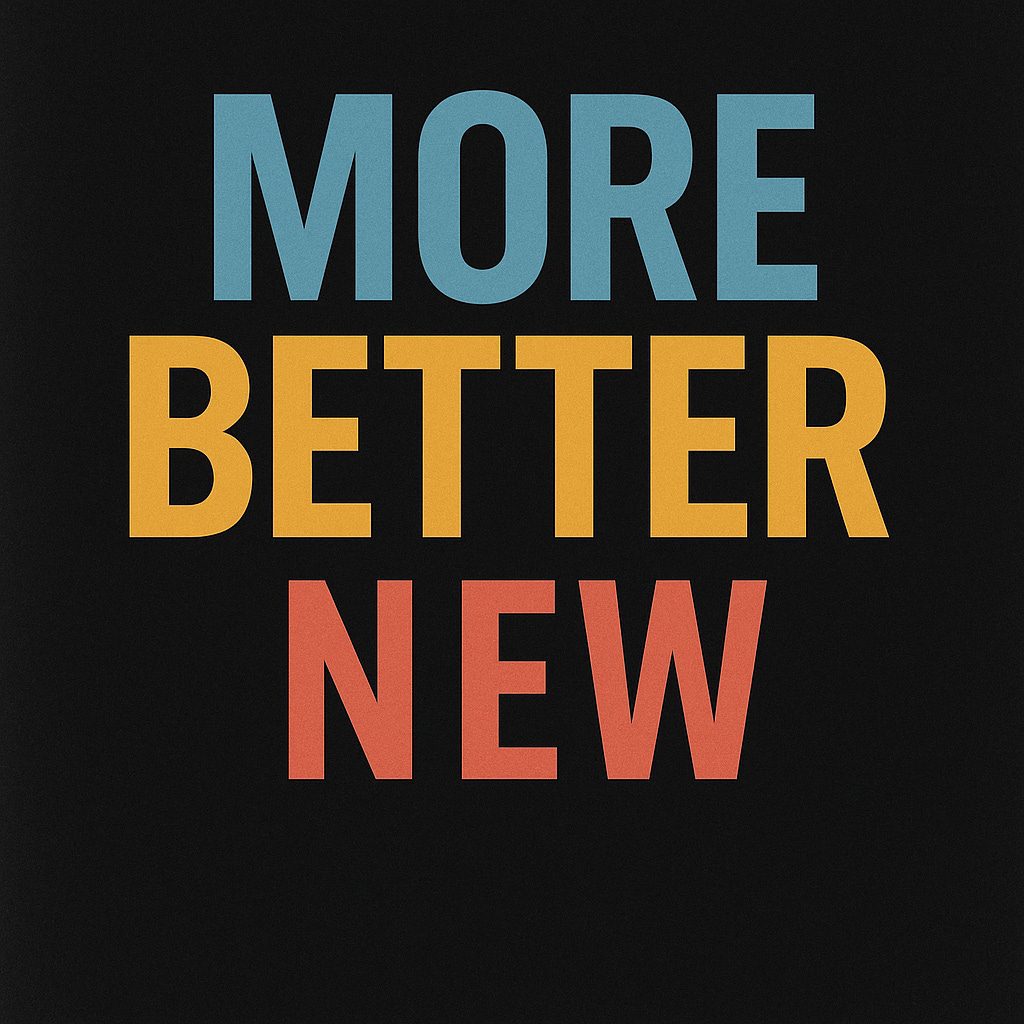More, Better, New
Why SaaS Strategies Are Being Rewritten in Real Time
In the early days of SaaS, the growth playbook was simple:
More customers
Better features
New products
The "more, better, new" mindset fueled an entire era of hypergrowth. Land as many accounts as possible, upsell improved functionality, then expand into adjacent solutions. For a while, it worked brilliantly.
But in 2025, that model is showing cracks and the SaaS space is being forced into a reset.
The Old Dynamics
For years, SaaS companies enjoyed three key tailwinds:
More was easy, cheap capital meant marketing budgets could be aggressive, and customer acquisition costs (CAC) didn’t sting as much.
Better was the differentiator, product teams shipped faster than customers could keep up, creating a steady upgrade path.
New was the sizzle, expansion into fresh product lines drove press, investor excitement, and cross-sell opportunities.
This cadence gave SaaS companies a predictable narrative to tell both the market and their customers.
The Shift We’re Seeing Now
Today’s dynamics look different.
Capital is no longer cheap. CAC is climbing, and there’s less patience for high burn rates without profitability. “More” is expensive, and in many cases, unsustainable.
Customers are change-fatigued. Even if your “better” feature set is impressive, adoption curves are slowing because users have too many tools and too little bandwidth to learn new ones.
The market is flooded with “new.” Launching a product isn’t enough, buyers expect clear ROI and seamless integration into their existing ecosystem.
The SaaS Squeeze
The result? We’re watching a compression play out:
Sales cycles are lengthening because decision-makers are scrutinizing every dollar.
The once-bright “better” pitch is dimming when customers realize they only use 30% of their current tool’s capabilities.
“New” products risk becoming shelfware if they don’t solve an immediate, high-priority pain point.
In this environment, the old “more, better, new” is less a growth engine and more a churn risk if handled poorly.
The Rethink: Value-First, Expansion-Later
The winning SaaS strategies now are flipping the script:
More → Maximize existing
Instead of chasing net-new at all costs, focus on depth. Drive adoption, engagement, and measurable results inside your existing accounts.Better → Relevance over volume
It’s not about adding more features, it’s about ensuring the features you already have are aligned to your customers’ top priorities right now.New → Embedded in customer workflows
“New” must feel like a natural extension of the tools and processes your customers are already using. If they need a full change management plan to adopt it, you’ve already lost speed and buy-in.
How Businesses Are Responding
Product teams are prioritizing simplification over expansion, cleaning up UI, reducing redundancy, and ensuring integrations work flawlessly.
Go-to-market teams are shifting to value engineering, showing direct ROI in the context of the customer’s current tech stack, not just in isolation.
Customer success teams are being empowered as growth engines, identifying expansion opportunities through real usage insights rather than generic upsell scripts.
The Takeaway
“More, better, new” isn’t dead, it’s just evolving.
In the current SaaS climate, it’s not about the volume of features, products, or customers - it’s about the quality and relevance of each.
The companies that win will be those who can resist the knee-jerk urge to flood the market and instead take a measured, value-first approach. In doing so, they’ll turn “more, better, new” from a vanity-driven growth cycle into a sustainable, customer-aligned engine.
If you liked this post, also check out:
The Evolution of Pricing Models in Software and Professional Services
In recent years, the landscape of pricing models in both the software industry and professional services has undergone significant transformations. Traditional approaches are being challenged and replaced by more flexible and value-driven models, such as usage-based pricing for software and outcome-based billing for professional services. This shift ref…



